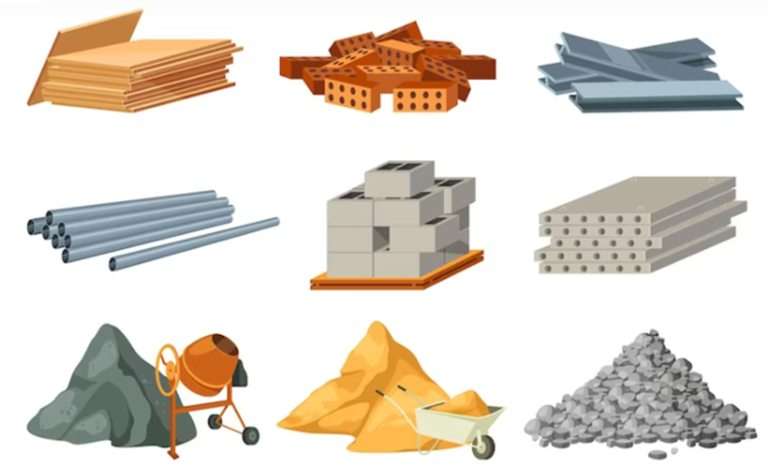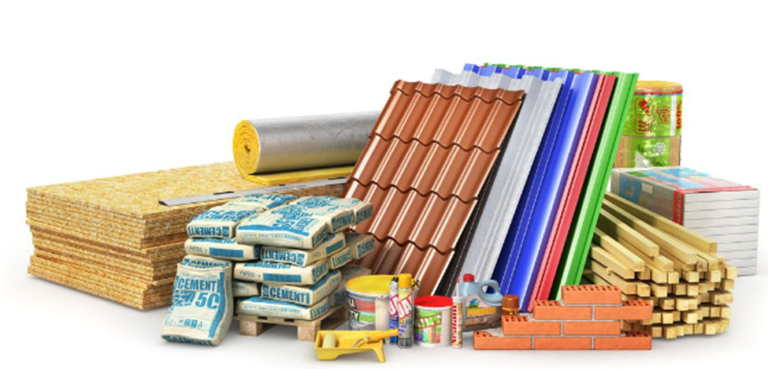How to Make Building Equipment More Eco-Friendly
The construction industry has an immense effect on the environment. Decreasing the environmental impact of building equipment is critical. Eco-friendly methods can help conserve energy and minimize waste. Here are some key ways for reducing environmental harm.

1. Choose Energy-Efficient Equipment
Energy-effective equipment requires less fuel or electricity. It lowers the release of greenhouse gases tremendously. Many companies now provide greener machinery choices. These machines use innovative technologies to save energy. Employing energy-efficient tools reduces your carbon footprint. When possible, choose energy-efficient equipment.
2. Use Electric or Hybrid Machines
Electric and hybrid machinery produce less pollution. They provide safer alternatives to typical fuel-powered machines. Electric machines use renewable energy sources. It helps to limit the consumption of oil and gas. Hybrid machines use both electric and fuel power. They provide higher fuel efficiency while reducing pollution.
3. Maintain Equipment Regularly
Regular maintenance improves the efficiency of your building equipment. Well-maintained machines use less fuel and perform better. Maintenance reduces wear and tear, extending equipment life. It also helps identify problems early. This prevents larger, more polluting issues down the line. Schedule routine maintenance for all equipment.
4. Avoid Idling Equipment
Idling wastes fuel and increases emissions unnecessarily. Turn off building equipment when not in use. Some machines come with automatic shut-off features. These features reduce fuel consumption during idle times. Reducing idle time also saves on operational costs. Encourage operators to avoid unnecessary idling.
5. Use Low-Emission Fuels in Building Equipment
Low-emission fuels produce fewer greenhouse gases. Options like biodiesel or natural gas are cleaner than diesel. These fuels reduce harmful exhaust emissions. Switching to low-emission fuels is an easy step. Many machines are compatible with these alternatives.
6. Recycle Construction Materials
Recycling materials helps reduce waste. Use recycled metal, concrete, or wood where possible. This reduces the need for new raw materials. Recycling also lowers energy use in producing new materials. Many construction projects now incorporate recycled content.
7. To Make Choice for Renewable Energy Sources
The use of renewable energy to power equipment has a lower environmental impact. Solar and wind energy are excellent choices. They release non-hazardous emissions when in use. Some construction sites employ solar panels to power electric equipment. This is an excellent strategy to lessen our reliance on fossil fuels.
8. Implement Efficient Worksite Planning
Efficient planning reduces unnecessary building equipment usage. Map out the project to avoid rework. This ensures machines are used only when necessary. Better planning also shortens project duration. This means less fuel consumption overall.
9. Train Operators in Eco-Friendly Practices
Operator behavior affects equipment’s environmental impact. Train your team on eco-friendly practices. Teach them to avoid idling, maintain equipment, and use energy efficiently. Skilled operators make better decisions, reducing fuel and emissions.
10. Use Equipment Sharing Programs
Equipment sharing reduces the number of machines needed. Instead of buying new equipment, consider renting or sharing. This minimizes resource use and manufacturing emissions. It also reduces the environmental impact of producing more equipment.
11. Install Air Filters on Diesel Engines
Air filters reduce harmful emissions from diesel engines. These filters capture pollutants before they enter the atmosphere. Many modern machines have built-in filters. For older equipment, installing filters can make a big difference.
12. Limit Water Use in Construction
Large amounts of water are frequently needed during construction. Limiting water use helps to safeguard natural resources. Use water-saving devices when possible. Modern equipment is characterized to reduce water use. Recycling water on-site can result in significant savings.
13. Choose Machines with Reduced Noise Pollution
Noise pollution affects both people and wildlife. Equipment with noise-reduction features is more environmentally friendly. Quieter machines also improve worker conditions. Select equipment with lower decibel levels to reduce noise pollution.
14. Switch to Smaller, More Efficient Machines
Larger machines often consume more energy. Switching to smaller, more efficient equipment saves fuel. Evaluate the size and power of the machines needed. Only use large equipment when absolutely necessary. Smaller machines also produce fewer emissions.
15. Practice Proper Waste Disposal
Improper disposal of construction waste harms the environment. Follow regulations for waste disposal. Use designated sites for hazardous materials. Recycle as much as possible to reduce landfill use.
16. Invest in Innovative Building Equipment
Modern equipment usually comes with sustainable characteristics. Modern technology enhances fuel efficiency and lowers pollution. Investment in modern machinery can reduce your entire environmental effect. It also increases operating efficiency on-site.
17. Monitor Equipment Emissions
Tracking emissions helps you identify areas for improvement. Use emission-monitoring devices on your machines. Regularly review emission data to adjust practices. This allows for better fuel management and environmental responsibility.
18. Plan for Equipment Decommissioning
Eventually, equipment will reach the end of its life. Plan for responsible disposal or recycling of old machines. Many parts can be reused or recycled. Avoid sending equipment to landfills whenever possible.
19. Work with Eco-Friendly Suppliers
Choose suppliers who prioritize eco-friendly practices. Look for companies that use green manufacturing techniques. Support suppliers who offer environmentally friendly products. This encourages the industry to adopt more sustainable methods.
20. Reduce Transportation Emissions
Transporting equipment creates emissions. Minimize transport distances by choosing local suppliers. Reduce the number of trips required for equipment delivery. Efficient transportation planning can significantly cut emissions.
21. Use Multi-Functional Building Equipment
Multi-functional machines perform various tasks. This reduces the need for multiple machines on-site. Fewer machines mean less fuel consumption and emissions. Look for equipment that offers multiple functions in one unit.
22. Choose Environmentally Friendly Lubricants
Many lubricants contain harmful chemicals. Choose biodegradable, eco-friendly lubricants for your equipment. These products reduce water and soil pollution. They also improve machine efficiency by reducing friction.
23. Promote a Culture of Sustainability
Encourage a workplace culture focused on sustainability. Regularly educate workers about the importance of eco-friendly practices. Reward teams that implement sustainable methods effectively.
24. Use Eco-Friendly Packaging for Equipment
Equipment packaging often creates waste. Choose suppliers that use eco-friendly or reusable packaging. This reduces the environmental impact of shipping equipment.
25. Switch to LED Lighting on Building Equipment
LED lights consume less energy and last longer. Equip machines with LED lights for night operations. This reduces power consumption and lowers environmental impact.
Limiting the environmental impact of building equipment is critical. From energy-efficient devices to environmentally friendly procedures, every step counts. Effective planning and responsible equipment use can make a significant difference. Incorporate these ideas to build a more environmentally friendly construction site.
Top of Form
FAQ’s
Bottom of Form
What types of building equipment are more eco-friendly?
How does regular maintenance reduce environmental impact?
Why should I avoid idling building equipment?
What fuels can I use to reduce emissions from equipment?
How can operator training help lower the environmental impact?






